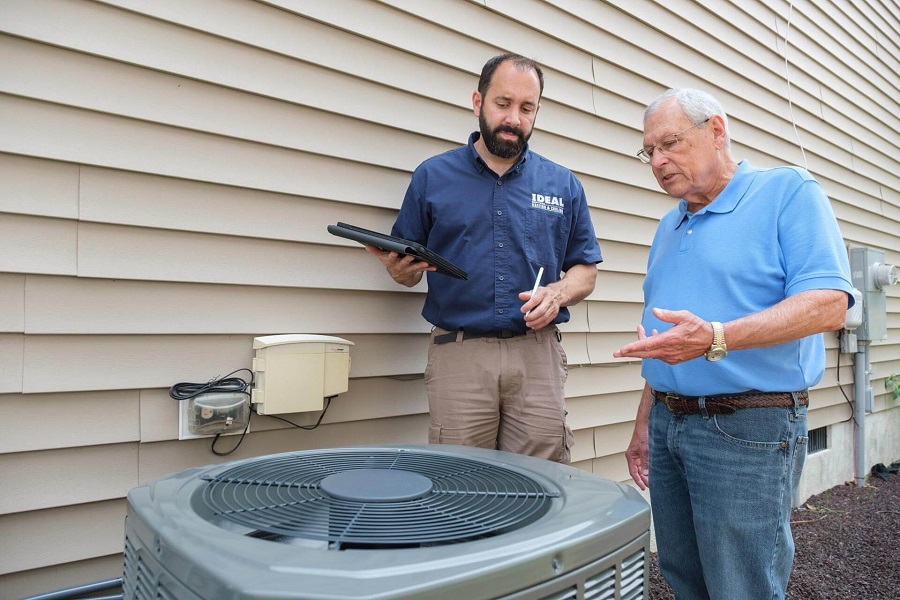
Cooling System Crisis or Care: Emergency Repairs vs. Routine Maintenance
When facing a cooling systems emergency repair in Indianapolis, IN, it’s easy to feel overwhelmed. Whether your system suddenly breaks down in the middle of a heatwave or is working inefficiently, deciding between an urgent fix or investing in regular maintenance can be a tough call. Understanding the differences between emergency repairs and routine maintenance is key to ensuring your cooling system runs smoothly and efficiently all year long. Let’s dive into how these two approaches affect everything from costs to response times, and why one might be a smarter choice than the other.
Emergency Repairs: When Your Cooling System Calls for Help
Emergency repairs are, by definition, unpredictable. These are the urgent situations when your cooling system suddenly stops working, typically on the hottest day of the year. In such cases, your top priority is to get the system up and running as quickly as possible to restore comfort to your home or business. Emergency repairs often occur after a critical part of the system fails, such as the compressor, refrigerant lines, or thermostat, leaving you with no cooling until a technician can arrive.
On the other hand, scheduled fixes fall under the umbrella of routine maintenance. These are planned visits from HVAC professionals who inspect, clean, and adjust your system at regular intervals, ideally once or twice a year. Routine maintenance is all about preventing those breakdowns that lead to emergency repairs. Instead of waiting for something to go wrong, maintenance visits allow the technician to spot minor issues before they escalate into major problems. While emergency repairs are reactive, routine maintenance is proactive.
Now that we’ve established the key differences between emergency repairs and routine maintenance, let’s take a closer look at the specific tasks involved in regular upkeep.
Routine Maintenance: Keeping Your Cooling System in Peak Condition
Routine maintenance for cooling systems involves a series of detailed checks and minor adjustments designed to keep the system running smoothly. Here’s a breakdown of some common tasks performed during these scheduled visits:
-
Filter replacement: Dirty filters restrict airflow and make the system work harder than it needs to, reducing efficiency.
-
Coil cleaning: Evaporator and condenser coils can accumulate dirt, reducing heat absorption and increasing energy consumption.
-
Thermostat calibration: Ensuring the thermostat is reading and regulating temperature accurately is key to maintaining comfort and energy efficiency.
-
Refrigerant level checks: Low refrigerant can reduce the system’s ability to cool effectively, leading to higher energy bills and potential system damage.
-
Inspection of electrical connections: Loose or damaged connections can lead to unsafe operating conditions and system failure.
-
Lubrication of moving parts: Reducing friction helps motors and fans run more efficiently and reduces wear and tear.
-
Condensate drain clearing: Blocked drains can lead to water damage and poor humidity control.
These tasks not only help the system run more efficiently but also extend its lifespan by preventing major failures that could lead to costly emergency repairs.
With these regular maintenance tasks in mind, it’s important to understand how the costs compare when looking at emergency repairs versus routine maintenance.
Crunching the Numbers: The Real Cost of Emergency Repairs vs. Routine Care
One of the biggest differences between emergency cooling system repair and routine maintenance is the cost. Emergency repairs, by nature, tend to be more expensive. Why? There are several factors that drive up the cost:
-
After-hours service fees: Emergency repairs often require technicians to work outside regular business hours, which can mean higher labor rates.
-
Expedited parts: If your system needs replacement parts, rushing them in for emergency repairs can significantly increase costs.
-
Severity of repairs: By the time a system requires emergency attention, the issue is often more complex and costly to fix than if it had been addressed during routine maintenance.
On the flip side, routine maintenance is relatively inexpensive, especially when compared to emergency repairs. Most HVAC companies offer affordable maintenance plans, where regular inspections and minor fixes are bundled together for a lower cost. By investing in routine maintenance, you can catch issues early, potentially saving yourself thousands of dollars in emergency repair costs down the road.
Clearly, the cost implications can vary significantly between emergency repairs and regular maintenance. But what about the difference in response times? Let’s explore how each scenario compares.
Response Time Showdown: Emergency vs. Routine Service Calls
The response time for emergency cooling system repair is, unsurprisingly, much faster than for routine maintenance. When your cooling system breaks down in the middle of a heatwave, HVAC companies understand the urgency of the situation and prioritize emergency calls. Most companies offer 24/7 service for these types of situations, ensuring that a technician is dispatched as quickly as possible. However, depending on the demand, particularly during extreme weather, even emergency services may experience delays.
Routine maintenance, by contrast, is scheduled at your convenience. These appointments are often planned during the spring or fall when the demand for HVAC services is lower. This flexibility allows homeowners and businesses to choose a time that works for them, without the stress of needing immediate relief.
The difference in response times may be important in the short term, but there are also long-term implications to consider when weighing emergency repairs against regular maintenance.
The Long Game: How Your Repair Strategy Impacts Your System’s Lifespan
The long-term implications of emergency repairs versus routine maintenance can be significant, particularly when it comes to the lifespan of your cooling system. Frequent emergency repairs indicate that the system is struggling, which can put added strain on components. Over time, this can lead to more frequent breakdowns and a shortened lifespan for your HVAC system.
Routine maintenance, on the other hand, promotes longevity. When you keep up with regular inspections and minor repairs, your system works more efficiently and experiences less wear and tear. This means fewer breakdowns and a longer lifespan for your cooling system. In the long run, investing in routine maintenance can save you the cost of an early replacement.
Now that we’ve covered the key differences, costs, and long-term impacts of both approaches, what’s the smarter choice when it comes to caring for your cooling system?
Why Proactive Maintenance is the Key to Cooling System Success
Both emergency repairs and routine maintenance play a role in keeping your cooling system operational, but they have very different approaches and outcomes. Emergency repairs are costly, reactive, and stressful, often resulting from a lack of preventive care. Routine maintenance, by contrast, is proactive, helping to catch problems early and keep costs down.
By investing in routine maintenance, you can avoid many of the headaches associated with unexpected cooling system breakdowns. Not only will you save money on emergency repair costs, but you’ll also enjoy the peace of mind that comes with knowing your system is operating efficiently and will last for years to come. So, when it comes to cooling systems, staying ahead with regular maintenance is the clear winner!


